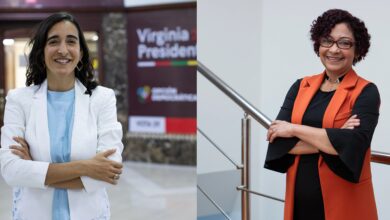‘Low’ socioeconomic status is the biggest barrier to STEM participation
A new study has found that socioeconomic status (SES) has the strongest impact on whether secondary school students study the STEM sciences.

Being of a low socioeconomic status can be a problem to be a part of STEM. / Photo: Pixabay
EurekAlert | TAYLOR & FRANCIS GROUP
Listen to this article
Leer en español: Estado socioeconómico es la mayor barrera para el STEM
A research team drew on data from over 4,300 pupils in Australia, and also looked at Indigenous students who are less likely to study all sciences.
Lead by Dr. Grant Cooper of RMIT University and Professor Amanda Berry of Monash University, the study – published in the International Journal of Science Education – highlighted the demographic predictors of secondary student science enrolment. They found that female students are much less likely to study physics, more likely to study biology, and have roughly average participation in other areas such as chemistry.
The study notes, however, that these categories are not mutually exclusive. Indigeneity, gender, and low SES status can all manifest in the same student, complicating the results.
The authors point out a worrying lack of initiatives to improve low SES students' access to science. "Australia has one of the highest levels of school social segregation of all OECD countries, meaning schools mainly enroll students from low or high SES backgrounds."
This problem is worsened by a lack of diversity in school syllabi.
Dr Cooper and Professor Berry argue that "a significant challenge for educators and school leaders is the implementation of a science syllabus that meets the diverse needs of students, particularly for underrepresented cohorts, who are less likely to have access to valued cultural, social and science capital."
Lower SES schools are less likely to have enough resources, such as books, materials, and laboratories, to support student engagement in science. The researchers point to the Finnish education system, in which students from different socioeconomic backgrounds study together.
"A students' ease of access to, and sustained immersion in cultural, social and science capitals facilitates a habitus and identity that embodies a sense that 'science is for me'."
Indigenous students face challenges in all forms of science except earth/space science, in which their participation was similar to other Australian children. The researchers suggest that this might be to do with cultural traits that emphasize a connection with the land.
"This result may be explained by Aboriginal Peoples' spiritual connectedness with Country, with land forming the basis of Aboriginal relationships, identities and cultural practices. Earth/space science syllabi commonly explore the interconnections between land, ocean and atmosphere."
Also read: Transphobia: the main reason of the lack of opportunities against the trans community
This result may offer a clue as to how to better include Indigenous students in science, by incorporating Indigenous perspectives into the course content. They note that the Australian Curriculum, Assessment and Reporting Authority has attempted this.
"[They have introduced] new science elaborations addressing Aboriginal and Torres Strait Islander histories and cultures. An important purpose of these elaborations is the hope that … 'Aboriginal and Torres Strait Islander students are able to see themselves, their identities and their cultures reflected in the curriculum of each of the learning areas, [and] can fully participate in the curriculum' (ACARA, 2018, para.1)."
While female students did show lower participation in physics, they were more involved than male students in biology, and about the same in other sciences. The researchers suggest that more needs to be done to encourage female involvement in STEM.
"Initiatives focusing on knowledge, ability, motivation and feelings of belonging could increase the interest and persistence in STEM education."





